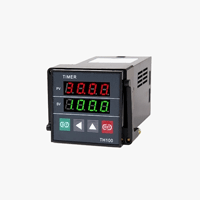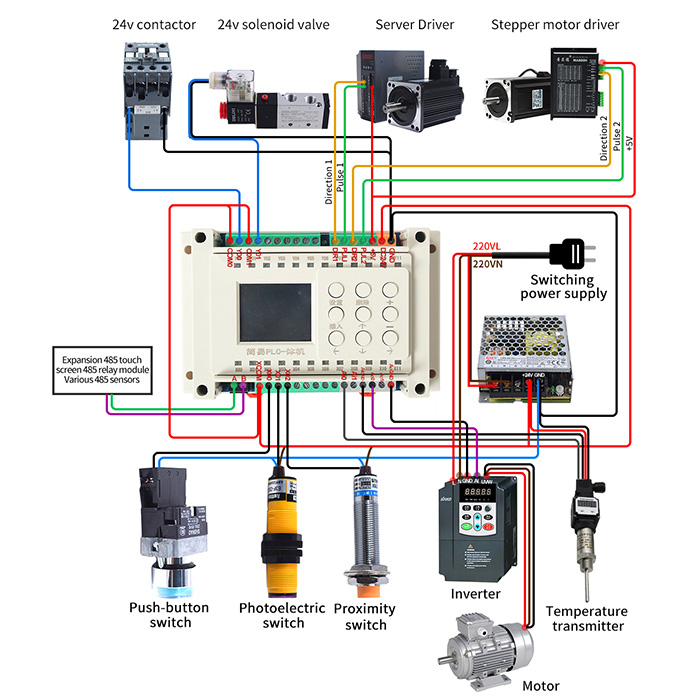How Does the Timer Relay Work?
A timer relay is an electrical device used to control switching operations in a circuit with a predetermined time delay. timer relays are very common in a variety of applications, from automation systems to industrial controls, and even home electronics. ATO shop will explain in detail how timer relays work, how they are constructed how they are used, and how they are important in modern technology.
Basic Construction of Timer Relay
- Control Switch or Contact: This is the main output part of a timer relay and is used to open or close a circuit after a predetermined time delay. The contacts can be mechanical or solid state.
- Clock or Timing Element: Timer relays are usually equipped with a clock or timing element to measure elapsed time. This can be mechanical, such as a pendulum or timing wheel, or electronic, such as a crystal.
- Control CircuitI: The control circuit usually consists of a timing element, a logic circuit, and a power supply to control the operation of the contacts. The timing element measures the elapsed time and triggers the operation of the contacts when a predetermined time is reached.
- Input Port: The input port is used to receive a trigger signal to initiate the timing process. The trigger signal can come from a variety of sensors, push buttons, switches, or other control devices.
- Adjustment Device: Timer relays typically have an adjustment device that allows the user to set the desired time delay. This can be a knob, switch, or digital display.
How Timer Relays Work
In the absence of a trigger signal, the timer relay is in its initial state, the contacts are usually open and the circuit does not conduct. When a trigger signal is received at the input port, the control circuit starts timing. The trigger signal can be an instantaneous event, such as a button press, or a continuous signal, such as from a sensor. The timing element starts measuring the elapsed time. The length of the time delay is determined by an adjustment device set by the user. It can vary from a few milliseconds to several hours.
When the timing element reaches a predetermined time delay, the control circuit triggers a contact operation. If it was previously open, the contact will close and conduct the circuit; if it was previously closed, the contact will open and cut off the circuit. The timer relay remains in the contact-operated state until the timing element is reset or a trigger signal is received again. Once the timing element is reset, the contacts will return to their initial state.
Applications of Timer Relays
- Automation Systems: In industrial automation, automated timer relays are used to control the operation of machinery, the coordination of production lines, and the execution of timed tasks. timer relays can be used to start and stop equipment at regular intervals to increase productivity.
- Lighting Control: Timer relays are used to control lighting systems, for example, in parking lots, office buildings, and homes. timer relays can automatically turn lights on and off as needed to save energy.
- Home Appliances: Timer relays are widely used in home appliances such as washing machines, air conditioners, microwaves, and ovens. timer relays can be used to set cooking times, washing times, and other operations.
- Security Systems: In security systems, timer relays are used to delay the operation of alarm or lockout mechanisms. For example, an access control system may use timer relays to delay the closing of a door to ensure the safe passage of a user.
- Agricultural Applications: Timer relays are used in agriculture to automate irrigation systems, greenhouse control, and feed distribution. This helps in increasing the efficiency of agricultural production.

Importance of Timer Relays
- Automation and Efficiency: Timer relays enable various systems and equipment to perform tasks automatically, thereby increasing efficiency and reducing the need for manual intervention.
- Energy Savings: Timer relays can be used to control lighting, HVAC, and other energy-consuming equipment, helping to conserve energy and reduce energy costs.
- Safety: In some applications, excellent relays can be used to delay or prevent hazardous operations, there by increasing safety.
- Automatic Scheduling: Timer relays enable various tasks and operations to be performed on a predetermined schedule, helping to rationalize work and life.
- Convenience: In appliances and other consumer products, timer relays provide convenient ways to control the operation of devices, making the user experience more user-friendly.
As a key electrical device, timer relays provide important support for automation, efficiency, safety, and energy conservation. The timer relay basic construction and operating principles make them suitable for a variety of applications, from industrial control to household appliances. In the future, as technology continues to advance, timer relays will continue to evolve and improve to meet the growing demand and play an even more important role in a variety of fields.

